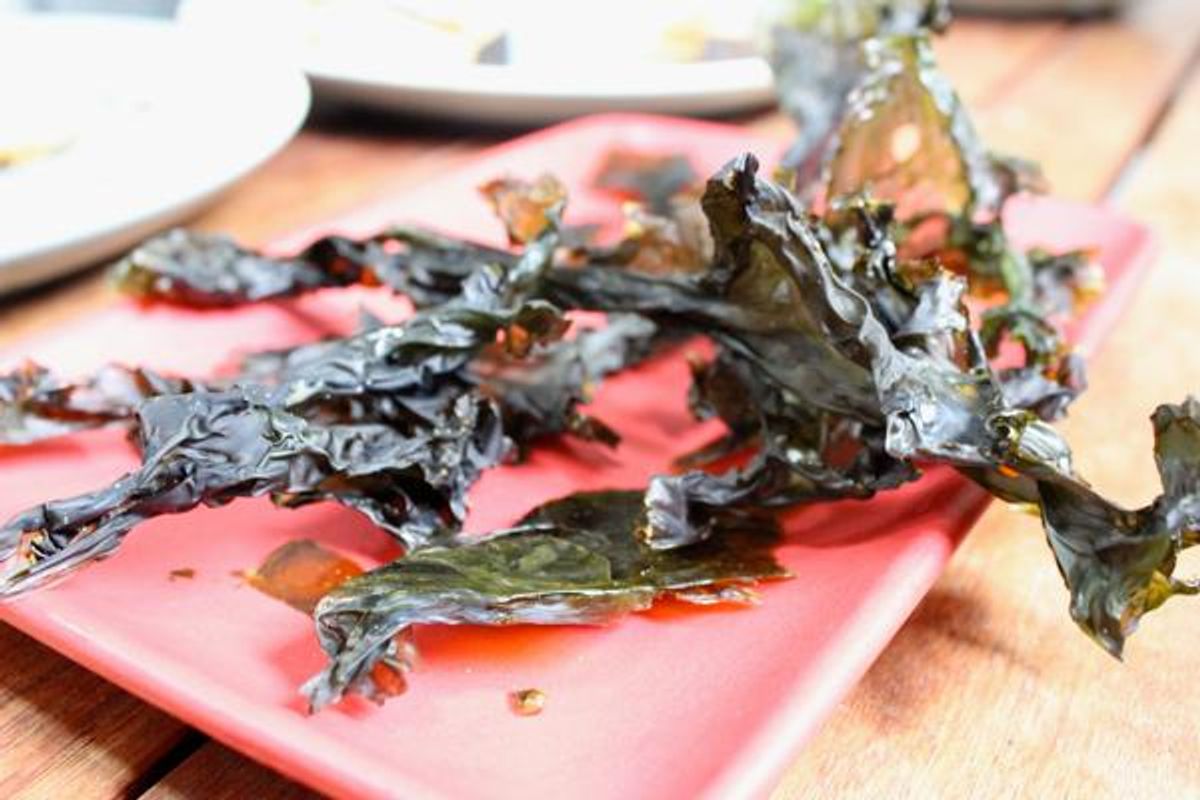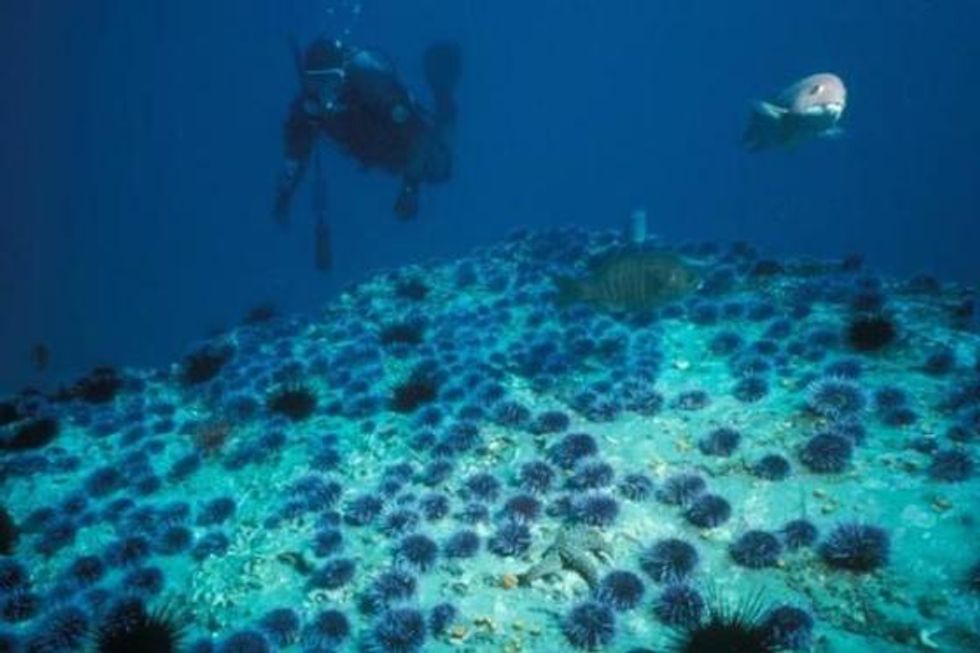Delicious, local, and sustainable the beaches around the San Francisco Bay are teeming with fresh seaweed, just ripe for the picking.
We spent the day foraging for seaweed and mussels at Muir Beach with Maria Finn, a local author and journalist living in the Sausalito Houseboat community. Maria taught us the philosophy behind ecosystem-based eating, or filling your plate based on a snapshot of nature. Want to return to your hunter-gatherer roots on the California coastline this weekend? Here's how to get started.
1. Find a Guide
Before you go and stick strange things in your mouth, team up with a seasoned forager who can help guide you on your gastronomical quest. Classes, books, and other resources are at your disposal so don't be shy about asking for help.
2. Check the Tides
Seaweed and mussels are pretty easy to grab on most Northern California beaches, but the tide needs to be out. Before you leave your house, identify when low tide occurs in the location of your choice.
3. Slippery When Wet: What to Bring
Note: tidepools are a splash zone. You're going to want to bring strong rubber boots with excellent traction for managing those slippery sea stones. You'll also want to bring garden shears or scissors for cutting seaweed from the rocks, a backpack with a plastic bag lining the inside for your haul, and a resilient attitude. As a rule, ocean environments will always find a way to surprise you.
4. Hunt & Gather
This is the easy part. When the tide is out you'll find nori seaweed (the kind used in sushi), mussels, and more clinging to rocks along the beach. Don't pick up anything that's lying on the beach itself, and avoid seaweeds that are brittle or have chunks missing from them.
Use your clippers to cut them at the base and then store what you get in your backpack. Take seaweed from multiple rocks to lessen your impact, and ultimately take no more than a third from each rock – note that this will still be more than enough to feed you.
5. Leave No Trace
Foraging brings you up close and personal with our shared ecosystem, which makes for an incredible learning experience – once you've foraged for food, you'll appreciate the value of every bite you take.
With that in mind, never take more than you need, and always leave your foraging location better than you found it. When Maria and I were on our seaweed hunt, she made sure to cut fishing lines and remove trash that had gotten wrapped around the tidal rocks. We also took care to keep from stepping on or harming any wildlife.
6. Never Turn Your Back on the Ocean
You may get so wrapped up in bagging seaweed and mussels that you don't notice the tide coming back in. Assess your foraging spot ahead of time to make sure you have an escape plan, as it's common for the tide to return very suddenly. “Pick a rock as your marker," suggested Maria, “and when the water reaches that rock you'll know it's time to turn around."
7. Clean & Eat!
Maria invited me back to her houseboat in Sausalito to enjoy the fruits of our labor. After cleaning the seaweed and mussels we had collected only a few hours prior, Maria made an excellent meal using those and other foraged ingredients, as well as sustainably caught anchovy from our own SF Bay, courtesy of Real Good Fish, a local Community Supported Fishery. Anchovies get a bad rap, but they are delicious when fresh from the water.
Love sea urchin? Learn how to dive for it, here.
---
This post was originally published in May 2015.






















